How to do landscape photography
Our landscape guide helps you grasp the basics required to shoot and edit amazing landscape photography.
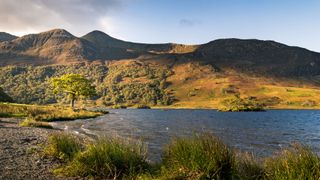
The wonderful thing about photography is how the skills you acquire from each style can lend to other styles of photography. Landscape photography is a great place to start when it comes to learning the essentials, especially if you're looking to progress onto night sky and astrophotography. In this guide, we will discuss everything relating to landscape photography so you can grasp the basics, from equipment to shooting times, and location scouting to editing. Once you're confident with the basics of photography, you'll discover how easy it is to branch out into different styles and photography techniques, and how you can weave your skills through multiple aspects of photography.
After you've mastered the information here, branching out into astro images and photographing aspects of the night sky will be much less daunting and you'll feel more confident creating a composition and editing your images. You may find our astrophotography for beginner's guide and photographing the moon helps with this.
In this article, we will discuss camera equipment, the best times to shoot and how to find a great location, photography techniques, and how to edit your photos effectively.
How to do landscape photography: Equipment
The first question to answer here is: which camera should I buy? Unfortunately, there's no easy way to answer this, as a lot of it is down to personal preference. Many photographers will focus more on finding a certain lens first, then look for a camera body that will fit that particular lens. Think about what features are important to you, be it quick autofocus, the size and weight of the camera, or how well it performs in low light.
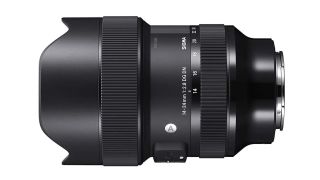
Lenses
When it comes to choosing a camera for landscape photography, the focus (pun intended) isn’t so much on the camera body itself, but more so on which lens you choose. Many photographers will actually purchase a certain lens first, then find a camera body that will fit that particular lens.
Generally, in landscape photography you’ll be using a wide-angle to mid-range focal length for the majority of your shots. Most kit lenses are somewhere within the region of 24-70mm, which is a great starting point for landscape photography. They're wide enough to capture broad vistas, but have enough zoom to pick out specific areas of a scene.
Wider focal lengths are primarily used for larger scenes with a foreground, mid-ground, and background. Specialized wide lenses usually run from 14-24mm, although some drop as low as 10mm. Generally, wide lenses are ideal for night sky photography and astro. Telephoto lenses can also be used in landscape photography - longer focal lengths are great for zooming in to isolate certain aspects of the scene, and the compression makes the objects appear much closer together. This would be a great lens to use if you want to focus on certain objects further away, or if there isn't much interest in the scene as a whole. If you're composing a shot of the moon, in a landscape, the telephoto lens is your best friend.
Tripod
Although a tripod is very useful to have, they aren't always a necessity for landscape photography. You can shoot without one in many cases, but there are certain situations and conditions where you definitely will need one.
You can get away with shooting handheld if there is a lot of good light, or if you're shooting a scene without much movement. Many lenses have built-in image stabilization so you can achieve some good results without the use of a tripod. If, however, you want to shoot long exposure (perhaps to capture the movement of long grasses), or you're shooting in the evening or under dark clouds where there isn't much light and therefore need to lengthen your shutter speed, you will definitely need a tripod.
If you’re shooting high up in the mountains or on a windy day - think about how sturdy you need your tripod to be. Carbon Fiber tripods, like the Benro Mach3 combines strength and lower weight, but you do pay for it. Lightweight tripods are fantastic to carry as they won’t break your back, but they don’t always hold their own in adverse weather. If you do go for a lightweight tripod, ensure to find one with a counterweight hook on the bottom of the central column. You can hang your camera bag on it to weigh the tripod down a bit so it doesn’t move in the wind. If you need something cheaper, but heavier, the Vanguard Alta Pro is a good option. Note that astro will always require a tripod, so it's best to have one.
- Related: Best Tripods for astrophotography, landscape and more
- Related: Nikon AF-S 14-24mm f/2.8 ED lens review
- Related: Sigma 14-24mm f/2.8 DG HSM ART lens review
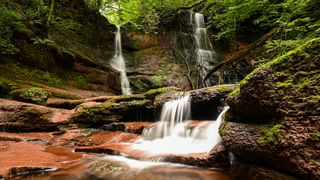
Filters
As a beginner in landscape photography, a filter may not be one of your top priorities. However, it's helpful to know how a filter can eliminate certain challenges when shooting landscapes, and how they can also enhance your images. You may have seen photos of rivers and waterfalls where the water looks beautifully flowing and milky and wondered - how do I achieve that? The answer is: with a Neutral Density filter or a polarizing filter. ND filters limit the amount of light going into the lens, which enables you to have a longer shutter speed. Using a long shutter speed is what gives the water that milky quality. The intensity of this effect depends on how long your shutter is open, so experiment with different timings. ND filters come in different strengths, but we'd recommend either a 2, 3, or 4-stop ND filter to get you started. Most filters require a holder too, so build this into your budget. Cokin make some great packages, and this ND kit is a great place to start.
A polarizing filter can also be useful in landscape photography. If you're shooting on a sunny day, a polarizing filter can boost the color of the sky, eliminate any unsightly glare from shiny leaves, and reduce reflections from the surface of any lakes you're shooting. You just attach the filter to the front of the lens and rotate the filter to get the desired effect.
Personal equipment
If you're going to be taking your camera along on hikes and long walks, you'll need to make sure you're prepared. We always wear walking shoes or hiking boots when we're out shooting, as well as weather-appropriate clothing and SPF. Warm clothing is especially important if you're going to be shooting at night. A comfortable camera bag is also very important. Check out our guide for the best camera rucksacks to see which ones we rate. Don’t forget to pack waterproofs for yourself and your camera in case it rains!
How to do landscape photography: Technique
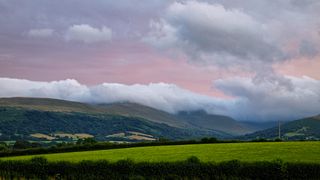
There are many different shooting styles and techniques when it comes to landscape photography. Here's a breakdown of some of them to help get you started.
Auto mode is a great place to start with landscape photography, as your camera will read the light and determine which shutter speed, aperture, and ISO is most appropriate to use. Using auto mode can give you less to think about if you're starting by focusing on composition. If you'd like to manually determine the depth of field of your photo, shoot in aperture priority. In this mode, you set which aperture you'd like the camera to use, and the camera will fill in the rest for you based on which aperture you've chosen. Aperture determines how much light reaches your camera sensor and can impact the sharpness and saturation of an image. If you want focused foreground objects, with softer backgrounds, go for a wider aperture (which is a lower f-number)

Shutter priority is the same concept, only you manually set the shutter speed. This is a great way of working your way up to full manual mode, where you can control all the settings. You'll generally need to use manual for astro so landscape photography is a great discipline to help you learn the skills.
There are also different shooting modes. For landscape photography, you'd normally be using single-shot mode. If, however, you wanted to shoot a moving object in your scene, for example, an animal, burst/drive mode would be beneficial to use here. In this mode, the camera takes numerous different shots for as long as the shutter button is held down.
Your composition largely depends on what type of scene is in front of you. If you're shooting large vistas, look for angles and intersecting lines in the scene. Using layers in hills is a brilliant way to create interest and lead the viewer through your photo. Try to have a focal point in the distance to focus on. If you want to zoom in on a particular tree in the distance, for example, you might consider framing the tree in the center of the photo to create more impact. Try different compositions within the same scene and see what you like the look of best when you get them onto the computer. Remember there's no right or wrong here.
Landscape photography goes hand in hand with wildlife and nature photography. In the spring you may want to isolate pastel flowers in the foreground by using a wide aperture. Or you could look for a carpet of bluebells that can fill your frame or give a beautiful foreground. Shoot these with the light coming in from the side of the scene to create gorgeous light rays. If you want to shoot deer or spring lambs, get down to eye level and use focus tracking with drive/burst mode.
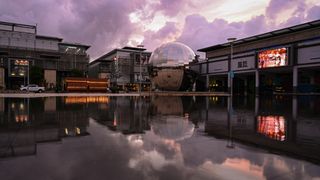
In summer, the blessing and challenge is that there's usually lots of light. To avoid overexposing your landscape scene, use an aperture of between around f9-f14 to make sure the whole scene is in focus and not to allow too much light through the lens. You can also overcome this by increasing the shutter speed if you don't want to capture movement in your photo. Consider using an ND filter if you need to limit the amount of light going through the lens, particularly if you are working with a slower shutter speed. This is a great way to add more drama to cloud cover when shooting on dull days.
In the Fall, you will likely want to capture the beautiful colors of fallen leaves. Using a polarizer here can help reduce glare from the leaves and boost the colors. If you're shooting water in your landscape, a polarizer will also eliminate reflections on the surface. Some cameras have an 'autumn colors' setting in the creative section of the camera menu.
A polarizer would also be useful in the winter to reduce the brightness of any snow. If you want to photograph sparse, lonely trees, use a wider aperture to focus right in on the tree and blur the rest of the scene. If you're shooting snow-covered hills, use a smaller aperture to get more of the scene in focus. You may need to dial down your exposure compensation on your camera if the scene looks a bit too bright.
When you are thinking about techniques, make sure you consider light. How does the cloud affect the light? If you're shooting on a very overcast day, the light will be soft, but also very flat. The quality of light will determine which ISO you use. You only really have to change your ISO if you're shooting in full manual mode, but a general rule of thumb is better quality light = lower iso, and low-quality light = higher iso. For night and astrophotography, you may need to use quite a high ISO to make sure you're capturing light as efficiently as possible. If you're worried about higher ISO creating grain, we do have a guide to reducing noise in astrophotography.
How to do landscape photography: Location & Times

It doesn't matter if you prefer cityscapes, classic landscapes, or even seascapes - you need to find interesting places to shoot, and know what they look like at different times of day (or in different weather and light conditions). While we can't tell you where to go and shoot, these are our tips on what to look for, and when.
First, you want to decide what type of landscape you want to shoot. Within landscape photography, you could photograph the mountains, lakes, deserts, coastal landscapes, rivers and waterfalls, woodlands and forests, national parks, rolling hills, and snowy landscapes - to name a few. Once you have an idea of your preferred scene, you can then find a more specific location. If that all seems a bit daunting to a beginner - see what types of landscapes are local to your area for you to dip your toe in, and go from there.
If you are looking to go further afield, researching your trip beforehand can save you so much time. Take inspiration from other photographers you like - we'd recommend people like Sam Binding and David Driver for classical landscapes, Graphic.Cal for urban landscapes, and Neil Harrison for seascapes and nature. If there's a particular photo of theirs you like, see if you can head to the same location and put your own spin on it. Instagram is great for finding new locations, as is Pinterest and blog posts.
It's a regular occurrence for every landscape photographer to stumble across a brilliant composition at the wrong time. When this happens, think about what kind of light and conditions you think would work best in the scene. You can then return to the same place to get the shot during those conditions - although this may take a few attempts!
In landscape photography, generally speaking, bad weather is good weather (most of the time!). If you're shooting astro, you need clear weather and no cloud cover, but landscape can be done in all weathers, all seasons. Each season of the year has something unique to offer, so there's no real "best time of year" to shoot.
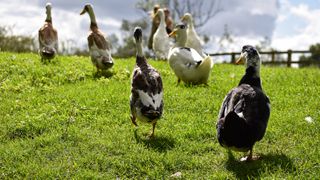
Spring is a beautiful time for photography because you get to experience the world waking up again. Flowers start to appear, baby chicks and lambs are born, and the chilly spring mornings make you long for summer. Some notable things in to
look out for in spring are dewdrops, bluebells, and lavender. If you manage to find a bluebell patch in the woods, go early in the morning so you capture the golden light rays beaming through the trees.
Summer is the season of early sunrises and late sunsets. Summer is a difficult season to shoot landscapes in, as there's often a lot of harsh light and not much interest in the sky. Summer can, however, be excellent for astrophotography as there are usually plenty of clear skies. Find your composition during the day, and either set up a tent or return at night to capture the stars and milky way over a quiet landscape. There's an app called The Photographer's Ephemeris which shows you where exactly in the sky you can find the sunrise, sunset, moon, and milky way on any given day. This app is great for planning as it removes the guesswork from your trips. You just need to hope for a clear night!
Fall is a favorite for many landscape photographers due to its beautiful colors. Our favorite scenes to shoot in the fall are woodlands, rolling hills, waterfalls and rivers. October is usually the best month for finding the most vibrant reds and oranges (in the Northern Hemisphere) - September is a bit early and November a bit late. For a foolproof fall photograph, try to find a winding river surrounded by trees. Fall is also great for getting high on the hills or in the mountains and shooting over foggy landscapes. Try including some colorful leaves in your foreground to give the impression of fall.
For most landscape photographers, winter is the least fun season to shoot in. It's cold, dark, wet, and there isn't much life to capture. However, winter can be the perfect time to capture moody, minimalist images. Photography is art, and if you can make the viewer feel something through your photographs, even if that feeling is a feeling of being cold, then we think it's a winner. As there are fewer daylight hours in the winter, it's also a great time to try out photography in the dark. You can get some beautiful images that capture the glow of fires and beautifully arranged Christmas lights. Once you've gotten the hang of shooting in the dark, astro will be much more accessible.
How to do landscape photography: Editing

A beautiful photo can easily be ruined by over-editing, or not enhancing the natural beauty captured within the photograph. We've always believed that the photo you take is only half the picture. Here are some tips to get the best out of your images during the editing process.
Lightroom and Photoshop are great to start with when it comes to editing programs, as they are the most widely used software. There are plenty of other editing software packages available, but these two are ideal for beginners. It's also best to edit on a computer with a large screen if possible to help you get the best results.
When you're sitting staring at your RAW file on a computer screen, it can be difficult knowing where to start when it comes to editing. We usually start by thinking about which direction we want to go in with the photo. Spend a bit of time looking at your image. Think of what type of scene it is, what the weather was like on that particular day, and also the temperature of the image. Try to get a picture in your mind of how you want the photo to look. This can give you a great starting point when deciding exactly how you'd like the final product to look.
There will be some global adjustments that need to be made, but try to think of your image as several different elements. Let's say, for example, you've taken a beautiful Fall photo of a waterfall surrounded by trees. The different elements in this photo would be the main focal point (the waterfall), the framing (the trees), and perhaps a river or some rocks in the foreground. In scenes like this, the light is not usually very well dispersed, so the trees and water would be fairly well lit, but anything lower down will appear quite dark due to the trees blocking the light. In this instance, you'd need to increase the exposure to bring back the detail in the rock, but increasing the exposure of the whole image could result in other areas being too overexposed. Being able to identify what each part of your photograph needs in terms of editing can help create a much more balanced and pleasing image.

To edit particular parts of your image, the radial and gradient filter tools are very useful, as well as the adjustment brush. The radial filter adds a circular filter to selected parts of the image, which can be useful for adding a vignette effect. The gradient filter adds a filter either upwards, downwards, or across the image - this is great for darkening the sky. The adjustment brush is used for painting certain parts of the image - for example, the dark rock in the foreground. You'd just paint over the rock with the brush and increase the exposure of the selected area. It's also worth identifying where your light source is coming from, as it will help you determine how much to manipulate the light and shadows on certain objects in your photo.
The control panels in Lightroom and Photoshop can be a bit daunting to a beginner. To help with your editing process, think about which tools are adjustment tools, and which tools are creative tools. Which tools are to do with light, and which tools are to do with color and tone? This will help you decide when and where to use certain editing tools on your photograph.
The tools used to edit the light are exposure, highlights, shadows, whites, blacks, and the tone curve. The exposure increases the brightness of the entire image. The highlight slider affects the brighter portions of your image, and if your highlights are a bit too bright you can easily decrease it to bring back some of the detail. The shadow slider affects the darker parts of the image and can be used to bring back any detail lost in the shadows. The white and black sliders affect where the brightest white and darkest black point is in your image. The tone curve can be used to manipulate all the tones in your image. To start with, try a gentle S-curve by slightly lowering the shadows on the bottom left side, and slightly increasing the highlights on the top right. This will also help add contrast to your image. When it comes to light, keep your eye on the histogram to make sure the image is exposed appropriately. Don't rely too much on your eyes for this as screens vary, but histograms don't.

The main color tools are saturation, vibrance, HSL panel, and split toning. The saturation affects the intensity of all the colors and tones in your image. The vibrance boosts the color intensity of the mid-tones only - this can be great for livening up a dull image. The HSL panel can manipulate the hue (shade), saturation (intensity), and luminance (brightness) of each individual color in your image. This is a great tool as it gives the most control, but be careful when editing colors as you don't want your
landscape photos to look unnatural. Finally, the split toning tool affects the color of the highlights, mid-tones, and shadows. We like to warm up the highlights and cool down the shadows, but you should play with it and see what impact it has on your photo.
Other useful tools are clarity, texture, and dehaze sliders. The clarity adds crispness to your images, but this tool only needs to be used in small amounts as it can add halos around objects in your image and it will instantly look over-edited. The texture tool brings out the natural shapes and textures in your image. The dehaze can help clear up hazy skies or add softness, depending on what look you're going for.
Different conditions and weathers often call for different styles of editing. A good way to start is to bring out and enhance the best aspects of the season in your photo. You wouldn't usually want harsh contrast and cool tones on a warm summer's evening, just like how you wouldn't necessarily have a particularly warm photo on a winter's day.
Spring
Spring is the season of life. We like to enhance the soft, pastel colors in our spring images, and we use lots of greens and earth tones to show new life. You can take either cool or warm photos during spring, depending on what time of day you've been shooting. Spring is often great for soft light and rain showers, so editing to enhance this can make a beautiful spring image.
Summer
Summer can be the most challenging season to shoot in, however, you can create some beautiful hazy photographs in the summer. Summer tends to be full of warm, bright colors. So try increasing the temperature of your images to the warmer side, and use the HSL panel to enhance the lush greens and bright blues. If you want to create hazy photos, or if you'd rather eliminate any haze you can do this with the dehaze slider. There is no right or wrong answer to this as it's a more creative tool, just make sure you don't go overboard.

Fall
Fall photographs are some of our favorites to edit as the fall colors are simply stunning. You can use the HSL panel to bring out those warm reds, oranges, and yellows, and you can even desaturate other colors to make certain tones pop. If there are a lot of fallen leaves in your photo, increasing the texture of the leaves can really enhance the feeling of your photo and make it a lot crisper.
Winter
Winter photos tend to be cold and harsh, like the season itself. During the editing process, you want to enhance the cold, blue tones and crisp whites by decreasing the temperature slider. Boosting the clarity, contrast, and texture can also add to the harsh winter feeling. Winter landscape photos can be quite minimal, so don't go too crazy with the editing. You could also consider editing your winter photos in black and white.
Ultimately, everyone has a different editing style. It does take time and experimentation to figure out your editing style, so have a play with the sliders in Lightroom and see what you can come up with! Once you've edited a photo, leave it alone. Go to a different room, get a coffee, and give your eyes a rest. Go back to it after 10 minutes (or longer if you'd like) and look at it again. You'll likely see something you missed the first time around. You may think the photo looks too warm or cool. Going back to the photo helps you look at it from a fresh perspective.
- Related: How to edit photos in Lightroom.
- Related: Best travel tripods
Join our Space Forums to keep talking space on the latest missions, night sky and more! And if you have a news tip, correction or comment, let us know at: community@space.com.
Get the Space.com Newsletter
Breaking space news, the latest updates on rocket launches, skywatching events and more!

Kimberley Lane is a landscape & seascape photographer living in South Wales. Originally using photography as a way to cope with health issues, she aims to portray a feeling of calm and peace through her images. Her work has been featured in a number of national photography magazines.
